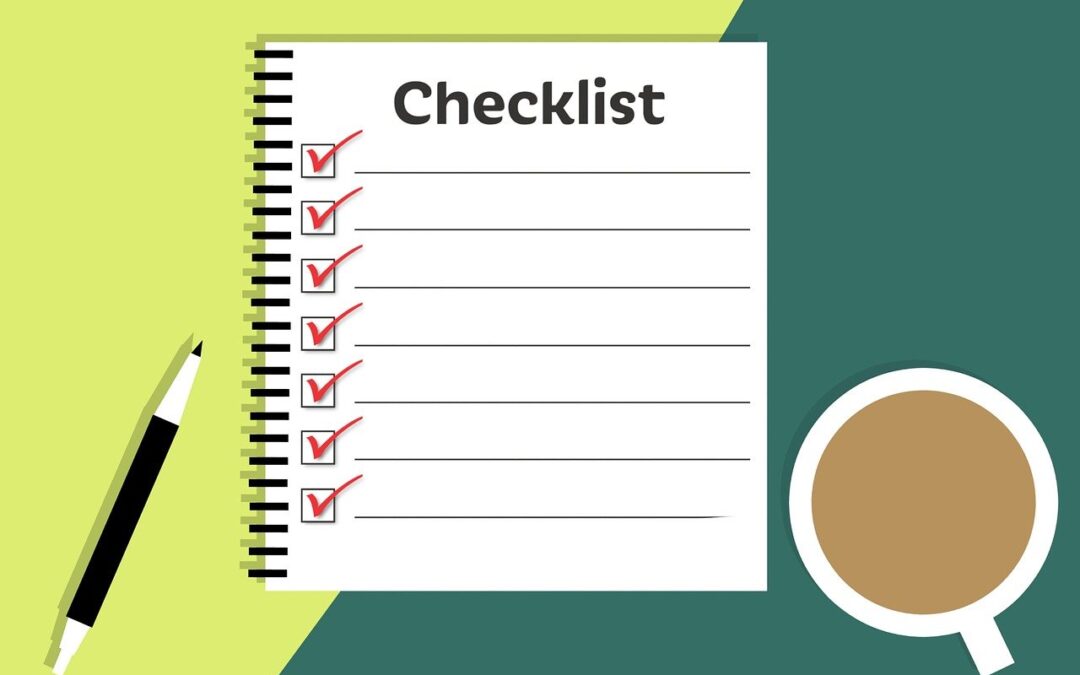
by Devon Bellamy | Feb 19, 2024 | Compliance, Employee Benefits, Human Resources
From understanding regulatory guidelines to leveraging compliance assistance, unlock the secrets to seamless ERISA compliance with Launchways, your trusted partner in navigating the intricate world of HR and benefits management.
Understanding and adhering to ERISA compliance regulations in the world of HR and benefits management is crucial. The Employee Retirement Income Security Act (ERISA) sets forth guidelines to protect employees and ensure the integrity of their benefit plans.
To shed light on ERISA compliance and provide valuable insights, delve into the Department of Labor’s (DOL) recent audit results and the assistance programs available to businesses with Launchways.
Understanding ERISA Compliance
ERISA serves as the cornerstone for safeguarding employees’ retirement and welfare benefits. It outlines the responsibilities of employers offering these plans, covering aspects such as reporting, disclosure, and fiduciary obligations.
Compliance with ERISA is not just a legal requirement but also a commitment to employees’ financial security.
DOL’s Audit Results: Insights & Implications
The DOL’s audit results for fiscal year 2023 offer valuable insights into ERISA compliance trends and challenges. With over 1.4 billion dollars recovered for employee benefit plans, participants, and beneficiaries, it underscores the importance of diligent oversight.
Other important findings from EBSA’s enforcement efforts are as follows:
- EBSA completed 731 investigations into rule violations. Out of these, 69% led to monetary penalties or corrective actions to improve employee benefit plans.
- EBSA forwarded 50 cases for legal action and resolved 196 criminal investigations.
- EBSA’s criminal probes resulted in charging 60 people, including plan administrators, company executives, and service providers, for breaking rules related to employee benefits plans.
These key findings from the audit highlight areas where businesses can enhance their compliance efforts to mitigate risks and protect employee interests.
Exploring DOL’s Compliance Assistance Programs
The DOL offers two primary assistance programs to support businesses in meeting these compliance requirements: the Voluntary Fiduciary Correction Program (VFCP) and the Delinquent Filer Voluntary Compliance Program (DFVCP).
These programs empower plan administrators to proactively address compliance issues and rectify any violations without facing enforcement actions. By participating in these programs, businesses can demonstrate their commitment to upholding ERISA standards and ensuring the integrity of their benefit plans.
Navigating ERISA Compliance with DOL’s Assistance
Navigating ERISA compliance can seem daunting, but with the DOL’s assistance programs, businesses can streamline the process. Here are some practical tips for leveraging DOL’s assistance effectively:
- Stay informed: Keep abreast of updates and changes to ERISA regulations to ensure ongoing compliance.
- Proactive approach: Identify and address compliance gaps promptly to prevent potential issues down the line.
- Utilize assistance programs: Take advantage of the VFCP and DFVCP to correct errors and enhance compliance efforts.
- Seek professional guidance: Consider partnering with legal or HR experts specializing in ERISA compliance to navigate complex issues effectively.
By adopting these strategies and utilizing DOL’s assistance programs, businesses can simplify ERISA compliance and uphold the trust and confidence of their employees.
Key Points
This update from Launchways isn’t meant to cover everything, and it’s not legal advice. If you need legal advice, it’s best to talk to a lawyer.
ERISA compliance is a cornerstone of effective HR and benefits management. By understanding the nuances of ERISA regulations and leveraging the assistance offered by the DOL, businesses can navigate compliance challenges with confidence.
From staying informed about audit results to participating in assistance programs, taking proactive steps is essential to safeguarding employee benefits and ensuring regulatory compliance.
With compliance made simple, businesses can prioritize the well-being of their employees while mitigating risks and maximizing compliance efforts.

by Devon Bellamy | Feb 7, 2024 | Compliance, Employee Benefits, Human Resources
In the dynamic world of employee benefits, health plan compliance is vital for employers. As we enter 2024, it’s crucial to understand and deal with the top compliance issues affecting health plans.
Tackling these issues head-on ensures a win-win situation: legal peace of mind and happier, healthier employees. Let’s look closer at each of these areas to understand their significance and implications.
New Rules About Transparency
Transparency in healthcare has emerged as a key focus area. The goal is to empower consumers with information about healthcare costs and quality.
In 2024, group health plans and insurance companies face a variety of transparency requirements. These rules include things like providing easy-to-read files, machine-readable files (MRFs), and cost comparison tools. These tools enable individuals to make informed decisions about their healthcare choices.
Employers must ensure that their agreements with service providers cover these obligations and otherwise follow federal rules on transparency. More guidance on transparency rules might come in 2024. Employers need to stay informed to avoid potential penalties or legal complications.
Mental Health Parity Compliance
Mental health parity (ensuring mental health care gets the same treatment as other healthcare) is crucial. The Mental Health Parity and Addiction Equity Act (MHPAEA) makes sure mental health and substance use disorder benefits are on par with medical/surgical coverage.
Employers need to compare different limits on mental health care to other healthcare. This helps show they’re following the rules. It’s essential for employers to make sure they’re following the rules to avoid any problems.
Employers can demonstrate rigorous compliance with MHPAEA requirements by conducting comparative analyses of nonquantitative treatment limitations (NQTLs). The government can ask to see these comparisons to ensure employers follow the rules.
Preventive Care Benefits
The Affordable Care Act (ACA) mandates that specific health plans cover preventive care without requiring cost-sharing. As guidelines on preventive care change, employers need to remain current. They must ensure that their health plans align with the latest recommendations.
Additionally, ongoing litigation about the ACA’s preventive care mandate complicates compliance efforts. Employers should closely monitor these legal changes and be prepared to update their health plans accordingly to mitigate potential risks.
Contraceptive Coverage
Access to contraceptives continues to be a focal point in healthcare. In 2024, the federal government may expand the ACA’s contraceptive coverage mandate to cover more types of contraceptives. The inclusion of over-the-counter (OTC) products could have significant implications.
\Additionally, monitoring developments related to exemptions to the contraceptive coverage mandate is crucial for ensuring compliance with federal regulations. Employers should stay on top of these regulatory changes and update their plans.
Electronic Filing Requirement for ACA Returns
Employers have to report certain health plan information to the government. Although electronic filing of ACA returns has become the standard practice for some, starting in 2024, this reporting must be done electronically for most employers.
Navigating the electronic filing process could be difficult. Getting familiar with the ACA Information Returns (AIR) Program is essential to ensure everything gets submitted on time.
Telehealth and HDHPs
Technology Driven Healthcare services, like video visits with doctors, are becoming more common. They offer greater accessibility and convenience for patients, transforming the healthcare landscape. However, integrating telehealth services with high-deductible health plans (HDHPs) raises unique compliance considerations.
Employers offering HDHPs must ensure these services comply with regulatory requirements, especially concerning Health Savings Account (HSA) eligibility. Laws might change, so employers should continue to monitor them.
Other Possible Changes
In addition to these compliance issues, employers should remain vigilant about other potential developments. This could include the following:
- State and federal oversight of Pharmacy Benefit Managers (PBMs)
- Changes to insurance coverage mandates
- Updates to HIPAA privacy and security rules
Staying informed requires ongoing monitoring. Employers should assess the impact of legislative and regulatory updates and emerging trends. They should be prepared to take the necessary steps to ensure compliance with regulatory requirements.
In Conclusion
Navigating health plan compliance in 2024 is a big task. Employers must adopt a proactive and strategic approach. By understanding the key compliance issues and keeping up with any changes, employers can effectively manage their health plans and avoid problems.
Prioritizing compliance does more than mitigate legal risks. It fosters a culture of trust and transparency in the company. Ultimately, it benefits both employers and employees alike.

by Devon Bellamy | Jan 31, 2024 | Compliance, Employee Benefits, Human Resources
On January 22, 2024, the Departments of Labor, Health and Human Services, and the Treasury jointly issued a comprehensive set of FAQs concerning the contraceptive coverage mandate specified in the Affordable Care Act (ACA).
This release aims to clarify the mandate’s scope, tackle compliance issues head-on, and introduce an innovative approach for managing the coverage of FDA-approved contraceptive drugs and devices.
This update is pivotal for shedding light on crucial facets of healthcare coverage, which is why we at Launchways took notice.
Understanding the Contraceptive Coverage Mandate
The ACA ensures that most health plans cover specific preventive care services without charging extra. One of these services is contraception. This is outlined in the Health Resources and Services Administration (HRSA) supported guidelines. However, there are exceptions to this rule. For example, employers with religious or moral objections can opt out of providing this coverage due to their beliefs and values.
According to the Departments of Labor, Health and Human Services, and the Treasury (Departments), this mandate requires health plans to cover (without cost-sharing) no less than one type of contraception for each listed in HRSA’s guidelines. Those include:
- Intrauterine devices with progestin
- Injectable contraceptives
- Oral contraceptives-combined pill
- Emergency contraception-levonorgestrel
Also covered are any FDA-approved, -cleared, or -granted products and contraceptive services that a person’s doctor determines as being medically appropriate. These can include newer products, even if outside the HRSA’s guidelines.
When HRSA’s guidelines do not specify how often, how, where, or with what method to provide a particular birth control method (or for similar services not covered in HRSA’s rules), health plans and insurance companies can use fair medical management strategies.
When that occurs, the issuer or plan must make it easy for employees to request exceptions. If an employee’s doctor states a specific birth control method is medically necessary, that process should be transparent, not too difficult, and without additional costs.
Unreasonable Medical Management Strategies
In an effort to control healthcare costs, it’s no surprise that some health plans and insurance companies are imposing “widespread barriers” that make it difficult for people to get birth control. These include unfair medical management strategies.
Examples of these problematic practices include the following:
- Requiring people to try out several different types of products or services to satisfy step-therapy protocols before they agree to cover the one their doctor recommends.
- Applying age limits for a contraceptive product or service that your doctor states is necessary.
- Imposing overly complex administrative requirements to get an exception process.
- Demanding cost sharing for secondary but necessary services vital to the primary service. An example of this is a medically required pregnancy test before specific contraceptive options.
Your New Optional Approach
To tackle compliance issues, the FAQs introduce a fresh alternative for health plans and issuers to adhere to the ACA’s contraceptive coverage mandate. This alternative, known as the therapeutic equivalence approach, offers a new method for ensuring compliance with the law.
With this approach, when health plans or insurance companies use certain methods for managing FDA-approved contraception within a specific category, they’re seen as fair if they do the following:
- It includes all FDA-approved birth control pills and devices in that group (or similar ones) without making employees pay anything extra, except for those with at least one similar option covered without cost-sharing by the plan or insurance company.
- It offers a process for employees to get an exception to cost-sharing for the specific birth control pill or device needed. This is especially important for medical necessities.
If one birth control pill or device is seen as therapeutically equivalent to another, it means they do the same job in the body. This can be verified by checking the FDA’s Approved Drug Products with Therapeutic Equivalence Evaluations (Orange Book).
Key Takeaways
With the government’s attention on birth control coverage, it’s a good idea for employers to check if their health plans comply with the ACA. This applies to health plans and insurance companies that aren’t ‘grandfathered’ in. Plans that are grandfathered or self-funded have more flexibility in how they’re set up, but companies should think about how limiting certain services might affect people.
Employers should watch for troublesome medical management strategies designed to limit access, like complex step-therapy rules, age limits, or complicated paperwork.
Since many use step-therapy rules to save money, leaders must consider how they will handle the new guidance. A new therapeutic equivalent approach was introduced. Employers and decision-makers in charge of health plans might want to know a bit more about it if plan members ask. Check out the FAQS ABOUT AFFORDABLE CARE ACT IMPLEMENTATION PART 64 (dol.gov).

by Jim Taylor | Oct 30, 2023 | Compliance, Diversity & Inclusion, Human Resources
In 2023, the number of lawsuits filed by the Equal Employment Opportunity Commission (EEOC) saw a significant 52% increase. This has left businesses wondering about what might happen in 2024.
As a protector of workers’ rights, the EEOC makes sure that federal laws against workplace discrimination are followed. Their main job is to guarantee that everyone is treated fairly. They aim to shield them from discrimination based on any of the following:
- Age
- Race
- Color
- Gender
- Religion,
- Place of origin
- Others
The EEOC is very dedicated to being fair and ensuring everyone is treated equally. To do this, it splits its efforts into three ways: providing education, prevention, and investigating complaints of discrimination. Its ultimate goal is to create a job market where every individual can participate and thrive, free from the burden of unjust bias or prejudice.
Based on recent behavior, companies can expect the EEOC to proactively address discrimination in the following year. Here, Chicago-based company, Launchways provides insights into the EEOC’s anticipated influence through 2024.
The EEOC’s Mission Intensifies
During fiscal year 2024, which started on October 1, the EEOC is set to intensify its efforts. This predicted increase in activity is partly due to a significant budget increase of 6%, amounting to an additional $26 million in funding. This financial boost underscores the government’s commitment to protecting workers’ rights.
Another factor is that the EEOC is now under the control of the Democratic party. After a year-long tie, the senate approved democrat Kalpana Kotagal to the five-chair committee. The democrat-rich EEOC is more likely to aggressively pursue all kinds of unfair treatment at work.
The EEOC’s plans include taking legal action against discrimination and identifying new forms of bias. In the year that ended on September 30, 2023, the EEOC filed 143 lawsuits. Some of these were about widespread discrimination. For example, one well-known case accused Tesla of worker discrimination at their factory in California.
What’s more, the EEOC is very determined to deal with new challenges in the workplace. For example, EEOC recently solved its first case involving AI bias. An international tutoring company, iTutorGroup, was using artificial intelligence to hire employees. They were required to pay $365,000 because the AI was picking candidates unfairly.
As the commission becomes more determined, employers should stay watchful. They should make sure to maintain a workplace that is fair, free from discrimination, and open to all employees.
What Can Employers Do?
Employers must take proactive steps to ensure compliance with anti-discrimination laws. Here are some key actions that businesses can take to promote fairness and prepare for the expected surge in EEOC lawsuits in 2024:
- Review and Update Policies: Employers need to carefully check their workplace rules. Look for regulations regarding discrimination, harassment, and equal chances. Making sure these rules cover everything, stay current, and are well explained to employees is really important.
- Provide Training: Teach employees and managers about anti-discrimination laws and rules. Regular training can make people aware and show them how to deal with discrimination at work.
- Set Up Reporting Systems: Make clear and private ways for employees to report discrimination. This is crucial for stopping issues before they get worse.
- Investigate Quickly: When there are complaints about discrimination, employers should immediately investigate. This not only solves problems but also shows that they are serious about fixing discrimination.
- Encourage Diversity and Inclusion: Building a diverse and inclusive workplace isn’t just a legal rule; it’s also the right thing to do. Employers can take steps to bring in more diversity at all levels of the company, making a place where all employees feel respected and valued.
What Is the Takeaway?
As we look ahead to 2024, it’s evident that the EEOC’s role in combating workplace discrimination will continue to be prominent. Employers should understand the changing rules and the EEOC’s dedication to strategically enforcing them.
The main idea for businesses is that being proactive is the best way to protect against possible EEOC lawsuits.
Employers can create a workplace that follows the law and treats all employees fairly by taking these steps:
- Checking and improving company policies
- Offering training
- Setting up reliable reporting systems
- Promptly investigating issues
- Promoting diversity and inclusivity
In the end, protecting workers’ rights and preventing discrimination benefits both employees and employers. With the right actions in place, businesses can navigate the evolving workplace rules and help build a more just and inclusive future.

by Devon Bellamy | Sep 25, 2023 | Compliance, Employee Benefits, Human Resources
The Retirement Savings Crisis
The Securing a Strong Retirement Act, also known as SECURE Act 2.0, was signed into place in December 2022. This law introduced new rules and requirements for retirement plans, all aimed at helping Americans save more money for their retirement. This comes as good news for working Americans who worry that they won’t have enough money when they retire.
A 2021 report from the National Institute for Retirement Security highlighted how a lot of U.S. workers are concerned about their retirement savings. It showed that most people believe there’s a real crisis, and many fear they will have to work beyond the age of retirement just to survive. For them, the new rules from SECURE Act 2.0 could be considered a lifesaver.
Unfortunately, however, they are causing real challenges for organizations. Those who rely on manual processes to make sure they remain compliant may find them especially challenging.
The new regulations will be enforced starting on December 31, 2024. That means organizations need to get ready pretty quickly.
Understanding SECURE Act 2.0
To better understand these new rules and what organizations need to do to prepare, let’s take a closer look at the details.
- Section 101: Automatic enrollment is required for all new 401(k) and 403(b) plans implemented after December 29, 2022. Additionally, enrollment must be set between 3% and 10% of the employee’s pay and increased by 1% each year until it reaches 10% to 15%.
- Section 125: Reduced eligibility requirements for 401(k) plans make it easier for part-time workers to join 401(k) plans. Instead of three years, employees must have worked at least two consecutive years, with at least 500 hours of work each.
- Section 603: Catch-up contributions are available for individuals 50 years or older, who earned over $145,000 last year. It allows them to classify catch-up contributions as Roth contributions. This offers significant tax benefits.
Unfortunately, these changes make it more complicated for companies needing to update their systems to handle these new rules.
Overcoming Implementation Challenges
Following these new rules can be really hard for smaller organizations because they have to do a lot of things manually. Unfortunately, the manual approach makes it more likely that human error in the process will go unnoticed until it’s too late. The potential consequence of this oversight can be extreme. Your company could face fines for even one tracking error.
Therefore, it’s vital to begin preparing for compliance immediately if you are affected by SECURE Act 2.0’s Section 125 and/or Section 603.
Does your company have the necessary technology in place to face this and the other challenges it faces?
Technology Solutions for Compliance
To ensure compliance, companies require the right technology. They need to be able to transfer a lot of data between their systems and the retirement plan providers’ systems. This includes payroll details and other sensitive personal identifiable information (PII).
Companies can choose from various methods including:
- Manual Data Entry
- SFTP
- Custom Integrations
- Unified employment APIs
Each has its benefits. The more automated the system is, the more accurate it is. The simpler and less expensive the method is, the more likely it is to result in costly mistakes.
Getting help from professional retirement advisors can help you assess your options and make the right choice for your company.
The Role of Retirement Advisors
Ideally, you should be planning and securing the support and tools you’ll need for 2.0 now. To ensure your company’s retirement landscape remains compliant, consider seeking the assistance of a professional retirement advisor. Advisors can:
- Inform you of important deadlines and keep you on track.
- Help you choose the right retirement plans.
- Explain what your company needs to do to follow the rules.
- Ensure compliance and safeguard you from legal consequences.
- Recommend tools to make sure the company is ready for the changes.
The right retirement advisor can be a valuable asset for companies wishing to identify and avoid potential pitfalls before SECURE Act 2.0 goes into effect.
A Final Note
With a looming retirement crisis, the need for change is apparent. SECURE Act 2.0 aims to provide opportunities for US workers to save for a secure retirement. Unfortunately, the manual processes used by many organizations present an increased risk of errors that could result in non-compliance.
Therefore, it is essential for plan providers and employers to begin enlisting support and implementing the correct technology to automate their systems. With the right resources, you should be able to seamlessly integrate your systems, reduce errors, and ensure compliance with SECURE Act 2.0–effectively and on time.

by Devon Bellamy | Sep 20, 2023 | Compliance, Employee Benefits, Human Resources
For many people, the workplace is their home away from home. For others, work is conducted from home. Regardless of whether you have a traditional work day or enjoy a remote or hybrid work schedule, you occasionally need a little flexibility in your life. During those times of need, many turn to FMLA to provide a bit of breathing room.
The Family and Medical Leave Act (FMLA) is a federal law that offers eligible employees of certain employers the right to take unpaid, protected leave for specific family and medical reasons. Covered employers must also maintain employees’ health benefits during this leave and guarantee their return to the same or equivalent positions afterward.
Many companies are subject to FMLA. These consist of public agencies and public or private schools, regardless of size. It also includes private-sector employers that have 50 or more employees during 20 or more workweeks in the year.
If your company falls under FMLA’s jurisdiction, this useful checklist can help ensure your compliance with FMLA.
FMLA Requirements
If your company falls under FMLA jurisdiction, you are required to display the FMLA poster where employees and applicants can easily see it. You can either use the U.S. Department of Labor’s (DOL) model poster or create your own.
You should also provide your employees with general notice about FMLA leave in the employee handbook. You can use the DOL’s model as an example. Your written materials regarding leave and benefits must contain all of the same information as the DOL’s model.
You are also required to maintain records related to FMLA compliance for at least three years.
Administering FMLA
The steps for administering leave are fairly straightforward. You should have an established method for tracking FMLA leave usage, including intermittent or reduced scheduled leave. You can create your own forms for administering FMLA leaves or use the DOL’s model forms.
Train your managers on FMLA compliance. They should be able to identify qualifying leave requests. It is also important that they understand the laws prohibiting interference and retaliation for requesting or taking leave.
Determining Eligibility for FMLA Leave
Eligibility for leave is based on specific criteria, the reason for the request, and whether the employee has available FMLA leave. To be eligible, an employee must meet the following requirements:
• Work for a company covered by the FMLA
• Worked for the company for at least 12 months
• Worked at least 1,250 hours for the company during the 12 months prior
• Works at a company with at least 50 employees
Qualifying reasons include caring for a newborn or adopting a child, dealing with a serious health condition, and military-related exigencies.
Eligible employees can take up to 12 weeks within a 12-month period.
Leave Process
Employers have the right to request a doctor’s note if an employee needs time off due to their own or a family member’s severe health issue. You can also ask for certification if the leave is related to military family matters. The Department of Labor (DOL) has standard forms like Form WH-381 that you can use for this purpose.
When an employee asks for leave, they should be told about this requirement. If medical certification is needed, they should be given the proper form along with the Notice of Eligibility and Rights & Responsibilities. They should have up to 15 calendar days to return it.
The Designation Notice states whether you decide to approve or decline FMLA leave. It should be given within five business days of the leave request (or when the certification is submitted if needed). You can use the DOL’s standard Designation Notice (Form WH-382) for this.
In Conclusion
As responsible employers, it’s vital to uphold certain standards to support your employees during their Family and Medical Leave Act (FMLA) journeys. It’s essential to remember that the specifics of FMLA compliance can differ based on unique situations and the presence of state or local regulations. This commitment to FMLA compliance not only benefits your employees but also strengthens your company’s commitment to their well-being and job security. You can use this as a guide to ensure the best support to your employees during their time of need. Review your company’s FMLA compliance, check out The 7 Steps for FMLA Compliance, and contact Launchways for further assistance.






